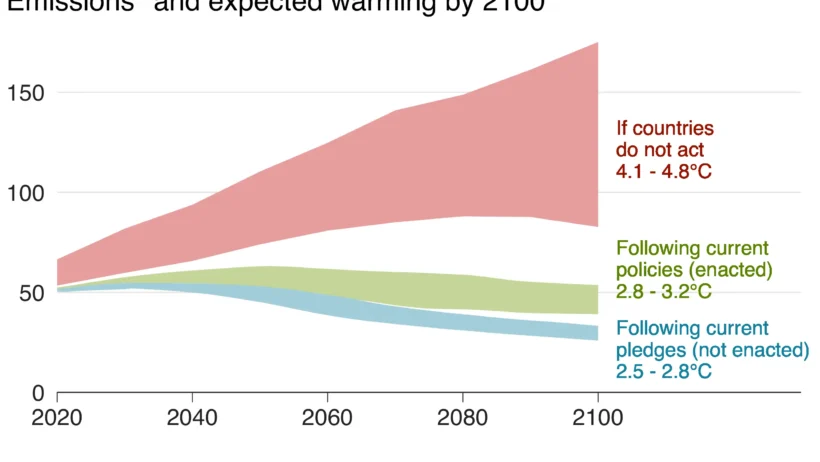Natural disasters have long been a recurrent theme in the annals of human history, each appearing with varying degrees of severity and impact. However, the recent increment in their frequency and intensity signals an alarming conflation with the phenomena of global warming. As climate change exacerbates the existing environmental conditions, we find ourselves confronting an escalating crisis that may reshape the very fabric of our societies.
The term “natural disaster” encompasses a plethora of events, including hurricanes, floods, wildfires, earthquakes, and droughts. These catastrophic occurrences not only precipitate immediate destruction but also catalyze longer-term repercussions that can affect ecosystems, economies, and public health. While natural hazards have existed for millennia, the scope and scale of recent disasters prompt us to consider how anthropogenic climate change plays a pivotal role in this transformation.
One cornerstone of this escalating crisis is the intimate relationship between rising global temperatures and extreme weather events. The Earth’s average temperature has climbed approximately 1.2 degrees Celsius since pre-industrial times, a seemingly innocuous figure that belies its far-reaching consequences. Warmer air holds more moisture, leading to heavier rainfall and increased flooding. Conversely, regions that experience prolonged droughts face arid conditions, heightening the frequency of wildfires and necessitating a reassessment of land management practices.
Hurricanes and tropical storms serve as a poignant illustration of this phenomenon. Their intensity and frequency tend to rise with warmer ocean temperatures, disrupting not only local communities but also affecting global supply chains and economies. A mere increase of 1 degree Celsius in sea surface temperature can enhance storm intensity, leading to catastrophic outcomes, as witnessed in recent Atlantic hurricane seasons. The financial toll can be staggering, elevating recovery costs and exacerbating humanitarian crises.
Moreover, glacial melt is transforming landscapes and hydrological patterns across the globe. As temperatures rise, ice masses retreat, leading to higher sea levels that threaten coastal regions with inundation. The United Nations estimates that by 2050, over 100 million people could be displaced by rising seas, presenting an urgent call for action. Urban centers, often ill-equipped to handle such demographic shifts, could suffer from increased housing shortages, straining social services and infrastructure.
In the realm of public health, the ramifications of natural disasters linked to climate change are equally dire. Increased flooding can lead to the proliferation of waterborne diseases, while excessive heatwaves are associated with higher mortality rates, particularly among vulnerable populations. Mental health issues also exacerbate in the aftermath of severe disasters, with survivors grappling with trauma and loss. The overall strain on healthcare systems can be substantial, influencing policy decisions and resource allocation.
A critical aspect often overlooked is the psychological toll that disasters exact on communities. The trauma associated with losing homes, livelihoods, and loved ones can have long-lasting effects, not only on individuals but on societal cohesion as well. Resilience building—both physical and emotional—must be prioritized to mitigate these psychological impacts and foster adaptive capacities in the face of recurring threats.
The institutional response to natural disasters has evolved alongside our understanding of climate change. Comprehensive disaster management strategies are now required to integrate mitigation, preparedness, response, and recovery into cohesive frameworks. Governments and organizations worldwide are increasingly recognizing the importance of collaborative efforts in enhancing community resilience, promoting sustainable practices, and advancing policies aimed at curbing greenhouse gas emissions.
International cooperation becomes central to addressing the multilateral nature of climate-induced natural disasters. Agreements, such as the Paris Accord, seek to unify nations in the struggle against climate change by committing to emissions reductions and supporting vulnerable countries. Investing in adaptive infrastructure, transitioning to renewable energy sources, and promoting sustainable land use are just a few pivotal steps necessary to combat the growing crisis.
Transitioning to a sustainable model does not merely encompass the curbing of carbon emissions; it requires a paradigm shift in how societies view their relationship with the environment. Education plays a fundamental role in instilling eco-consciousness, fostering stewardship, and galvanizing grassroots movements. When individuals comprehend the mechanisms behind climate change and its connection to natural disasters, they are more likely to engage in meaningful actions that promote environmental sustainability.
As we illuminate the nexus between climate change and the escalation of natural disasters, curiosity about our response becomes paramount. What innovations can we harness to bolster resilience? How can local communities rebuild stronger after devastation? Curbing the cycle of disaster necessitates a collective commitment to sustainable practices, informed decision-making, and the establishment of a robust support network across global communities.
The urgency of this issue demands not only attention but action. Whether through advocating for policy change, participating in local sustainability initiatives, or fostering a dialogue about climate risks, each individual has a role to play. By reframing our understanding of the connection between natural disasters and global warming, we stand poised at a pivotal juncture where informed action can curtail the looming threats ahead.





